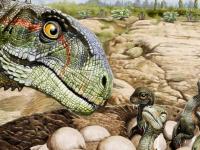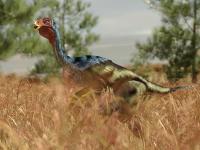Meat-Eating Dinosaurs Adopted Highly Specialized Diets

The fossil record is filled with meat-eating dinosaurs. Some paleontologists have suggested there are too many theropod dinosaurs, given what scientists know about food chains.
New research, however, suggests meat-eating dinosaurs developed highly specialized diets, allowing theropods to avoid competition for resources.
Of course, scientists can't go back and watch theropods hunt and feed. For the new study, published in the journal Paleontology, researchers had to infer details about dino diets by analyzing the shapes and sizes of jaws and teeth.
"I measured everything I could from the jaws and teeth of 83 theropod dinosaurs, including the giants, but also small ones the size of a turkey," lead study author Joep Schaeffer, a graduate student at the University of Bristol in Britain, said in a news release.
For each fossil, scientists recorded dozens of measurements related to the specimen's jaws and teeth. The researchers used a model to help them compare the measurements from each species.
"We could simply treat all the separate measurements as part of the mix, or we could measure so-called landmarks, where we make an outline of the jaw and tooth shape by marking dots round the edge," said Bristol professor Mike Benton. "So, in the end, Joep ran his analyses using each possible measurement method, and we compared the results."
Though there were a variety of ways to analyze the measurements, the model showed each statistical method yielded similar results. The data revealed stark differences between the predatory anatomy of each species.
The data showed tyrannosaurs were especially unique, and in a class of predator all their own. Scientists determined that maniraptoriform theropods, the group of dinosaurs most closely related to birds, featured the greatest variation in jaw shapes.
The findings suggest maniraptoriform theropods and other meat-eating dinosaurs adapted their jaws to target niche prey.
"Tyrannosaurs were good at subduing large prey with their massive jaws. So, they all had the same kinds of jaws and teeth. But the maniraptoriforms were experimenting with a wide range of smaller prey, maybe from small dinosaurs to early mammals and lizards -- even some large, juicy insects," Schaeffer said. "This meant they had evolved a much wider array of kinds of jaws and teeth, and while many probably continued to hunt prey on the ground, others might have become specialized to hunting in the trees and pursuing fast-moving prey."
Source: www.upi.com/








